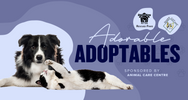Cattle ranchers in Alberta face challenges every day, especially in the winter heading into calving season. During February and heading into March with the consistent extreme cold Alberta ranchers are facing even more difficulties this year.
Lindsey Koole who works with her family running a 140 head cow/calf operation west of Standard sees these challenges first hand.
In 2018, Koole was facing similar temperatures and issues to those they are seeing in 2019. As a family operation Koole, her husband Brent, her dad Harvey and three kids Jace, Avery, and Kash are putting in more time and having to utilize more manpower and resources during this time of year, especially with the extreme temperatures.
Koole says, "The February snowfall and cold temperatures found us using more hay than usual and extra bedding that we don’t usually have to with a more seasonal winter. During the cold nights of calving, timing is very important, we find ourselves out at the pens way more frequently in order to deal with the calf as soon as it is born."
As with most ranchers, Koole says that they try to let the cows calve as natural and undisturbed as possible but during the harshness of this winter as with previous winters if needed they will bring the calf into the barn away from the elements.
It is important to bring the calves into a heated area to dry off so their ears, tail, and feet do not freeze. Once it is deemed that they will be safe to be out in the elements they will be returned to their mother as quickly as possible.
Koole says, "We find it very important to keep fresh, dry bedding available for them during these cold stretches which can also help avoid sickness. With the start of March being as cold as it has been, and the last few weeks, a Chinook will be a very welcoming sight for both us and the cattle."
With Environment Canada calling for the current cold conditions to continue through March ranchers in our area will have more challenges to work through as this calving season continues.







